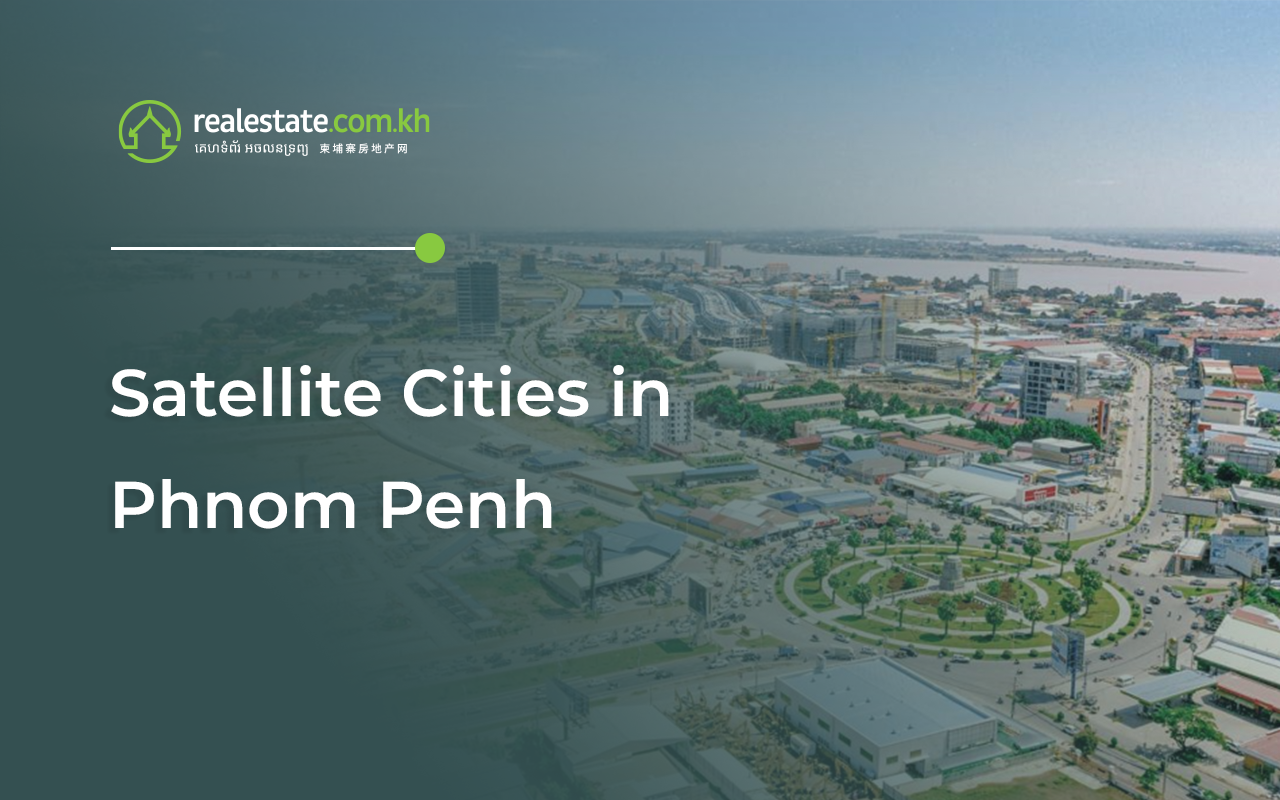Urbanisation has been an ongoing global trend, with more and more people moving to cities in search of better job opportunities, improved amenities, and a higher standard of living. However, this rapid influx of people into major cities has resulted in overcrowding, increased traffic congestion, and a strain on resources and infrastructure. Phnom Penh is no exception to this problem. According to the Ministry of Land Management, Urban Planning, and Construction, Cambodia’s urban population is to reach 7.92M by 2030. Therefore to counter these challenges, satellite cities have emerged as a strategic solution to decongest larger cities. In Phnom Penh, satellite cities are gradually playing a crucial role in managing urban growth and creating sustainable living spaces. In this article, we will delve into further details regarding the benefits it offers.
What Is a Satellite City?
A satellite city, also known as a commuter city, is a self-contained urban area located near a larger city. These cities are designed to accommodate residents who work in the city but choose to live in a less crowded and more affordable environment. The concept originated in the early 20th century as a response to overcrowding and housing shortages in major cities.
One of the primary goals of satellite cities is to reduce the strain on urban infrastructure, including transportation systems, housing, and public services. By providing an alternative residential option for city workers, satellite cities help distribute the population more evenly and alleviate the burden on the main city's resources. This decentralised approach to urban planning also promotes regional development and economic growth outside the major city.
The main difference between a smart city and a satellite city is that a smart city is a technologically advanced city, while a satellite city is a smaller urban area located close to a large city centre.
Satellite City in Phnom Penh
In Phnom Penh, satellite cities like Koh Pich, Koh Norea, and Chroy Changvar become popular choices for commuters due to their proximity to the capital and newly built transportation links. These areas offer a more relaxed pace of life, affordable housing costs, and access to green spaces, making them attractive options for those seeking a balance between work and quality of life.
Satellite cities also contribute to reducing traffic congestion and improving transportation networks. Many satellite cities are well-connected to the main city through roads, making commuting easier and more efficient. This reduces the number of vehicles entering the city centre, thus alleviating traffic congestion. Moreover, improved transport connectivity between satellite cities and cities can enhance accessibility for residents, making it easier for them to access employment, education, healthcare, and other services.
Furthermore, satellite cities often offer a range of amenities and services that cater to the needs of residents. These include schools, shopping centres, recreational facilities, and healthcare facilities. By providing such amenities locally, satellite cities reduce the dependence of residents on the main city for everyday services, resulting in a more balanced distribution of resources. Chroy Changvar is a good example where, within 10-minute drive popular destinations such as Makro (goods wholesaler), Sokha Hotel (5-star hotel), and Safari World (first waterpark and zoo in Phnom Penh). In addition, schools dot the area as well with plenty of elementary, secondary, and tertiary educational institutions nearby such as Chea Sim Middle School, Norton University, and the Cambodia University of Technology.
While satellite cities have proven to be effective in decongesting larger cities, it is essential to ensure sustainable development and avoid the creation of isolated dormitory cities. Adequate planning and infrastructure investment are necessary to create vibrant and self-sufficient communities. If satellite cities have been carefully planned they will encompass their own economic catalysts, including job prospects, social infrastructure, and lifestyle amenities.
In conclusion, satellite cities play a vital role in decongesting larger cities by offering an alternative residential option for commuters. These cities have successfully managed urban growth, reduced traffic congestion, and improved the quality of life for residents. By distributing the population and resources more evenly, satellite cities promote regional development and create sustainable living spaces. However, careful planning and investment are essential to ensure these cities evolve into vibrant and self-sufficient communities that offer a high quality of life for their residents.
Ready to see new development projects in Cambodia? Find out the latest on our website by clicking here





Comments